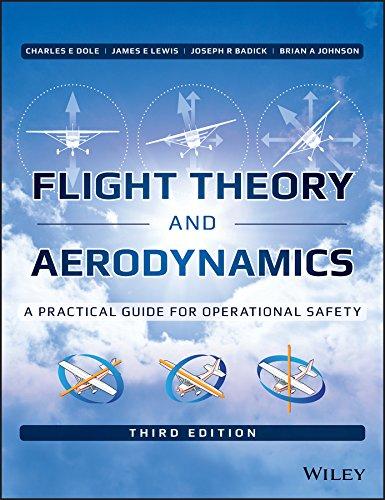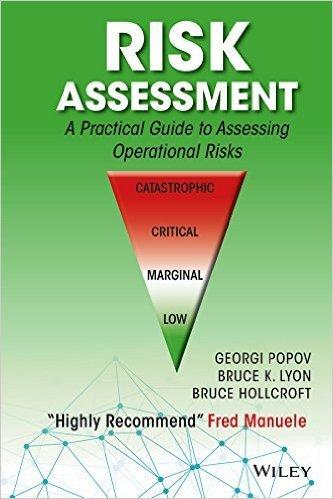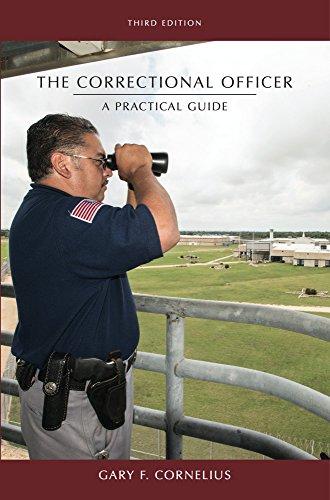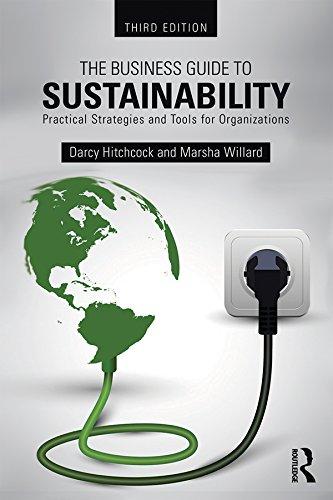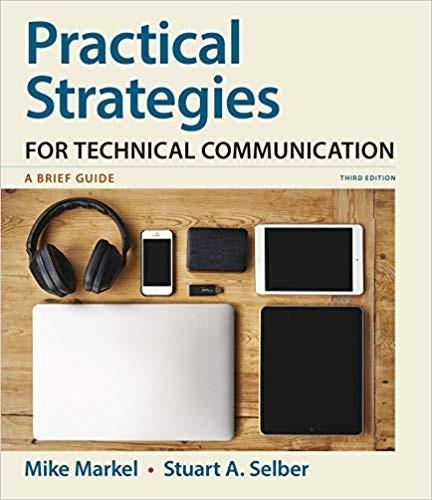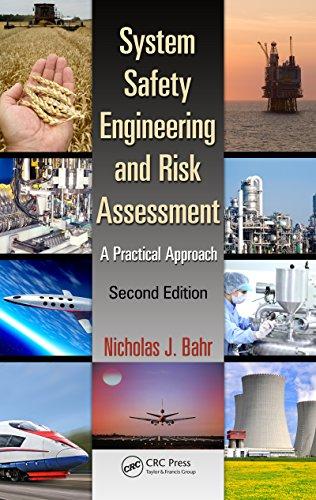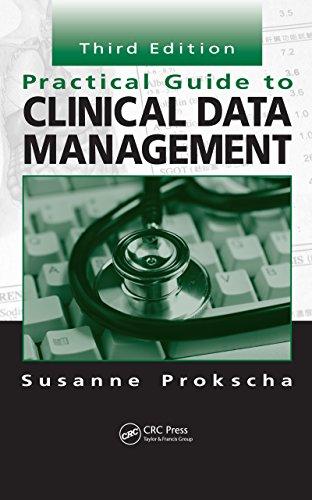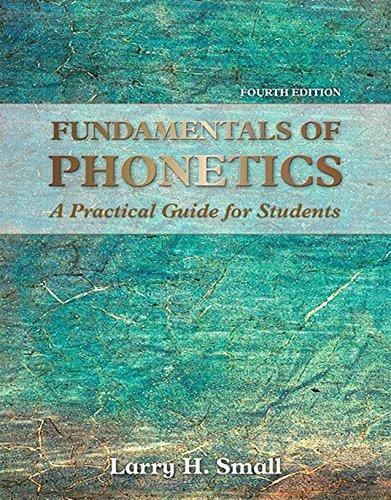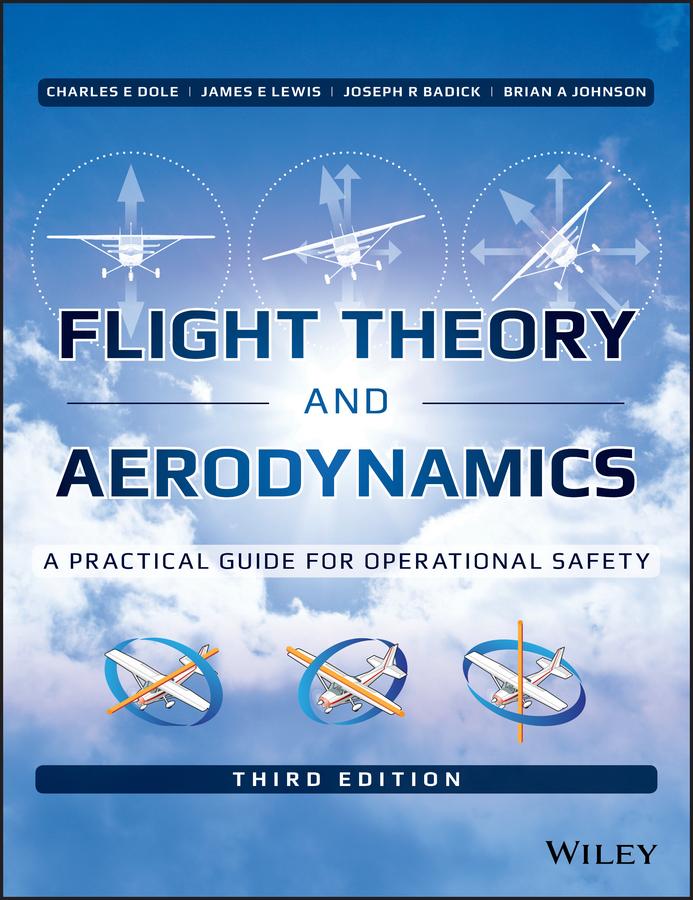Visit to download the full and correct content document: https://ebookmass.com/product/flight-theory-and-aerodynamics-a-practical-guide-foroperational-safety-3rd-edition-ebook-pdf/
More products digital (pdf, epub, mobi) instant download maybe you interests ...
eTextbook 978-1118911044 Risk Assessment: A Practical Guide to Assessing Operational Risks
https://ebookmass.com/product/etextbook-978-1118911044-riskassessment-a-practical-guide-to-assessing-operational-risks/
The Correctional Officer: A Practical Guide, Third Edition 3rd Edition, (Ebook PDF)
https://ebookmass.com/product/the-correctional-officer-apractical-guide-third-edition-3rd-edition-ebook-pdf/
Critical Theory Today: A User Friendly Guide 3rd Edition, (Ebook PDF)
https://ebookmass.com/product/critical-theory-today-a-userfriendly-guide-3rd-edition-ebook-pdf/
The Business Guide to Sustainability: Practical Strategies and Tools for Organizations 3rd Edition, (Ebook PDF)
https://ebookmass.com/product/the-business-guide-tosustainability-practical-strategies-and-tools-fororganizations-3rd-edition-ebook-pdf/
(eTextbook PDF) for Practical Strategies for Technical Communication: A Brief Guide Third Edition
https://ebookmass.com/product/etextbook-pdf-for-practicalstrategies-for-technical-communication-a-brief-guide-thirdedition/
System Safety Engineering and Risk Assessment: A Practical Approach, Second Edition 2nd Edition, (Ebook PDF)
https://ebookmass.com/product/system-safety-engineering-and-riskassessment-a-practical-approach-second-edition-2nd-edition-ebookpdf/
Practical Guide to Clinical Data Management 3rd Edition – Ebook PDF Version
https://ebookmass.com/product/practical-guide-to-clinical-datamanagement-3rd-edition-ebook-pdf-version/
Fundamentals of Phonetics: A Practical Guide for Students 4th Edition, (Ebook PDF)
https://ebookmass.com/product/fundamentals-of-phonetics-apractical-guide-for-students-4th-edition-ebook-pdf/
Mastering Competencies in Family Therapy: A Practical Approach to Theory and Clinical Case Documentation 3rd Edition, (Ebook PDF)
https://ebookmass.com/product/mastering-competencies-in-familytherapy-a-practical-approach-to-theory-and-clinical-casedocumentation-3rd-edition-ebook-pdf/
Low-LevelWindShear,216
AircraftPerformanceinLow-LevelWindShear,218
EffectofIceandFrost,221
WakeTurbulence,222 Problems,224
13ManeuveringPerformance227
GeneralTurningPerformance,227 Equations,242 Problems,243
14LongitudinalStabilityandControl245
Definitions,245 OscillatoryMotion,246
AirplaneReferenceAxes,248
StaticLongitudinalStability,248 DynamicLongitudinalStability,260 PitchingTendenciesinaStall,261
LongitudinalControl,264 Symbols,266 Equations,266 Problems,266
15DirectionalandLateralStabilityandControl269
DirectionalStabilityandControl,269 StaticDirectionalStability,269 DirectionalControl,276 Multi-EngineFlightPrinciples,280 LateralStabilityandControl,284 StaticLateralStability,284 LateralControl,288
DynamicDirectionalandLateralCoupledEffects,288 Symbols,293 Equations,293 Problems,293
16High-SpeedFlight
TheSpeedofSound,295 High-SubsonicFlight,297
DesignFeaturesforHigh-SubsonicFlight,298 TransonicFlight,301 SupersonicFlight,305 Symbols,316 Equations,316 Problems,316
295
17Rotary-WingFlightTheory319
MomentumTheoryofLift,320
AirfoilSelection,320
ForcesonRotorSystem,321
ThrustDevelopment,323
HoveringFlight,324 GroundEffect,326
RotorSystems,328 DissymmetryofLiftinForwardFlight,330 HighForwardSpeedProblems,333 HelicopterControl,334
HelicopterPower-RequiredCurves,336
PowerSettling,SettlingwithPower,andVortexRingState,338 Autorotation,340 DynamicRollover,341 Problems,343
Preface Thethirdeditionof FlightTheoryandAerodynamics wasrevisedtofurtherenhancethebook’suseasan introductorytextforcollegesanduniversitiesofferinganaeronauticalprogram.Thepublisherconducteda surveywithaviationschoolstodeterminewhatwasneededinanupdatedtext.Theresultisthisthirdedition thatmeetsnotonlyclassroomrequirementsbutalsopracticalapplication.
Allseventeenchaptershavesomelevelofupdatingandadditionalcontent.Therevisionretainsmathematical proofs,butalsoseekstoprovideanon-mathematicaldiscussionofaerodynamicsgearedtowardamorepracticalapplicationofflighttheory.Assuch,itisahowtohandbookaswellasoneaboutthetheoryofflying.Itwas writtenforallparticipantsintheaviationindustry:Pilots,aviationmaintenancetechnicians,aircraftdispatchers,airtrafficcontrollers,loadmasters,flightengineers,flightattendants,meteorologists,avionicstechnicians, aviationmanagers,asallhaveavestedinterestinbothsafetyandoperationalefficiency.
Updatesinthethirdedition:
• Newsequenceofchaptersforbetterflowoftopics
• Extensiveupgradetothehelicopterchapter,includingdiscussionofothertypesofrotorcraft
• Addedmoderngraphics,includingcorrelationwithcurrentFAApublications
• Addeddetailinsubjectmatteremphasizingpracticalapplication
• Additionaltermsandabbreviations
TheauthorswouldliketothankourcontactsatWileyfortheirsupportthroughoutthisrevisionaswellas thesupportofourcolleaguesandfamilies.InparticulartheauthorswouldliketothankSteven.A.Saunders forhistechnicalcontributiontothisrevision,employingover50yearsofmilitary,airline,andgeneralaviation experienceintheprocess.Finally,theauthorswouldliketogratefullyacknowledgethepreviousworkofCharles E.DoleandJamesE.Lewisfortheircontributiontoimprovingaviationsafetythroughouttheaviationindustry.
JosephR.Badick
BrianA.Johnson
AbouttheAuthors Aformermarine,thelateCHARLESE.DOLEtaughtflightsafetyfortwenty-eightyearstoofficersoftheU.S. AirForce,Army,andNavy,aswellasattheUniversityofSouthernCalifornia.
ThelateJAMESE.LEWISwasanassociateprofessorofAeronauticalScienceatEmbryRiddleAeronautical UniversityinFlorida,formeraeronauticalengineerfortheColumbusAircraftDivisionofRockwellInternational,andretiredOhioNationalGuardmilitarypilot.
JOSEPHR.BADICKhasoverfortyyearsofflightexperienceinsingle,multi-engine,land/seaplaneaircraft. Ratedincommercialrotor-craftandgliders,withthehighestratingof(A.T.P.)AirlineTransportPilot.A licensedairframeandpowerplantmechanic,withinspectionauthorization(I.A.),hehasinstallednumerous aircraftaerodynamicperformance(S.T.C’s)SupplementalTypeCertificates,withtestflightchecks.Heholds aPh.D.(ABD)inBusinessfromNorthcentralUniversityofArizonaandaMaster’sdegreeinAeronautical Science.HewasaNavalOfficerfor30yearsasanAeronauticalEngineerDutyOfficer(AEDO),involvedinall aspectsofaircraftmaintenance,logistics,acquisition,andtest/evaluation.Currentlyheisaprofessorofaviation atacommunitycollegeintheCareerPilot/AviationManagementdegreeprograms.
BRIANA.JOHNSONisaformerairlineandcorporatepilotwhoholdsamulti-engineAirlineTransportPilot certificate,inadditiontoCommercialpilotsingle-engineland/seaprivileges.Heisanactiveinstrumentand multi-engineGoldSealflightinstructorwithanadvancedgroundinstructorrating.HeholdsaMaster’sdegree inAeronauticalSciencefromEmbry-RiddleAeronauticalUniversityandcurrentlyservesinafacultyposition foratwo-yearCareerPilot/AviationManagementdegreeprogram,inadditiontoservingasanadjunctfaculty memberintheAeronauticalSciencedepartmentofamajoraeronauticaluniversity.
FLIGHTTHEORY ANDAERODYNAMICS 1 Introduction Abasicunderstandingofthephysicallawsofnaturethataffectaircraftinflightandonthegroundisaprerequisiteforthestudyofaerodynamics.Modernaircrafthavebecomemoresophisticated,andmoreautomated, usingadvancedmaterialsintheirconstruction,requiringpilotstorenewtheirunderstandingofthenaturalforces encounteredduringflight.Understandinghowpilotscontrolandcounteracttheseforcesbetterpreparespilots andengineersfortheartofflying,andforharnessingthefundamentalphysicallawsthatguidethem.
Perhapsyourgoalistobeapilot,whowill“slipthesurlybondsofearth,”asJohnGillespieMageewrote inhisclassicpoem“HighFlight.”Ormaybeyouaspiretobuildormaintainaircraftasaskilledtechnician. Orpossiblyyouwishtoserveinanothervitalroleintheaviationindustry,suchasmanager,dispatcher,meteorologist,engineer,teacher,oranothercapacity.Whicheverareayoumightbeconsidering,thistextbookwill attempttobuildonpreviousmaterialyouhavelearned,andhopefullywillprepareyouforasuccessfulaviationcareer.
THEFLIGHTENVIRONMENT Thischapterbeginswithareviewofthebasicprinciplesofphysicsandconcludeswithasummaryoflinear motion,mechanicalenergy,andpower.Aworkingknowledgeoftheseareas,andhowtheyrelatetobasic aerodynamics,isvitalaswemovepasttherudimentary“fourforcesofflight”andintroducethrustand power-producingaircraft,liftanddragcurves,stabilityandcontrol,maneuveringperformance,slow-speed flight,andothertopics.
Uptothispointyouhaveseenthattherearefourbasicforcesactingonanaircraftinflight:lift,weight, thrust,anddrag.Nowwemustunderstandhowtheseforceschangeasanaircraftacceleratesdowntherunway, ordescendsonfinalapproachtoarunwayandgentlytouchesdownevenwhentravelingtwicethespeedofa caronthehighway.Onceanaircrafthassafelymadeitintotheair,whateffectdoesweighthaveonitsability toclimb,andshouldtheaircraftclimbuptotheflightlevelsorstaylowerandtake“advantage”ofthedenser airclosertotheground?
Bydevelopinganunderstandingoftheaerodynamicsofflight,howdesign,weight,loadfactors,andgravity affectanaircraftduringflightmaneuversfromstallstohighspeedflight,thepilotlearnshowtocontrolthe balancebetweentheseforces.Thistextbookwillhelpclarifytheseissues,amongothers,hopefullyleavingyou withabetterunderstandingoftheflightenvironment.
BASICQUANTITIES Anintroductiontoaerodynamicsmustbeginwithareviewofphysics,andinparticular,thebranchofphysics thatwillbepresentedhereiscalled mechanics.Wewillexaminethefundamentalphysicallawsgoverningthe forcesactingonanaircraftinflight,andwhateffectthesenaturallawsandforceshaveontheperformance characteristicsofaircraft.Tocontrolanaircraft,whetheritisanairplane,helicopter,glider,orballoon,thepilot mustunderstandtheprinciplesinvolvedandlearntouseorcounteractthesenaturalforces.
Wewillstartwiththeconceptsofwork,energy,power,andfriction,andthenbuilduponthemaswemove forwardinfuturechapters.
BecausethemetricsystemofmeasurementhasnotyetbeenwidelyacceptedintheUnitedStates,theEnglish systemofmeasurementisusedinthisbook.Thefundamentalunitsare
Forcepounds(lb)
Distancefeet(ft)
Timeseconds(sec)
Fromthefundamentalunits,otherquantitiescanbederived:
Velocity(distance/time)ft/sec(fps)
Area(distancesquared)squareft(ft2 )
Pressure(force/unitarea)lb/ft2 (psf)
Acceleration(changeinvelocity)ft/sec/sec(fps2 )
Aircraftmeasureairspeedinknots(nauticalmilesperhour)orinMachnumber(theratiooftrueairspeedto thespeedofsound).Ratesofclimbanddescentaremeasuredinfeetperminute,soquantitiesotherthanthose aboveareusedinsomecases.Someusefulconversionfactorsarelistedbelow:
Multiplybytoget
knots1.69feetpersecond(fps)
fps0.5925knots milesperhour(mph)1.47fps
fps0.6818mph
mph0.8690knots knots1.15mph nauticalmiles(nm)6076feet(ft) nm1.15statutemiles(sm) sm0.869nm
knots101.3feetperminute(fpm)
FORCES Aforceisapushorapulltendingtochangethestateofmotionofabody.Typicalforcesactingonan aircraftinsteadyflightareshowninFig.1.1.Figure1.2showstheresolutionoftheaerodynamicforcesduring
AERODYNAMIC FORCE (AF)
THRUST
WEIGHT
Fig.1.1. Forcesonanairplaneinsteadyflight.
Fig.1.2. Resolvedforcesonanairplaneinsteadyflight.
U.S.DepartmentofTransportationFederalAviationAdministration, Pilot’sHandbookofAeronauticalKnowledge, 2008
straight-and-level,unacceleratedflightandisseparatedintofourcomponents.Thecomponentthatis90∘ to theflightpathandactstowardthetopoftheairplaneiscalled lift.Thecomponentthatisparalleltotheflight pathandactstowardtherearoftheairplaneiscalled drag;whiletheopposingforwardforceisthrustandis usuallycreatedbytheengine. Weight opposesliftandaswewillseeisafunctionofthemassoftheaircraft andgravity.
MASS Mass isameasureoftheamountofmaterialcontainedinabody. Weight,ontheotherhand,isaforcecaused bythegravitationalattractionoftheearth(g = 32 2ft∕s2 ),moon,sun,orotherheavenlybodies.Weightwill vary,dependingonwherethebodyislocatedinspace.Masswillnotvarywithposition.
(W )= Mass (m)× Accelerationofgravity (g)
Rearranginggives
Thismassunitiscalledthe slug
Drag
SCALARANDVECTORQUANTITIES Aquantitythathassizeormagnitudeonlyiscalleda scalar quantity.Thequantitiesofmass,time,andtemperatureareexamplesofscalarquantities.Aquantitythathasbothmagnitudeanddirectioniscalleda vector quantity.Forces,accelerations,andvelocitiesareexamplesofvectorquantities.Speedisascalar,butifwe considerthedirectionofthespeed,thenitisavectorquantitycalled velocity.Ifwesayanaircrafttraveled 100nm,thedistanceisascalar,butifwesayanaircrafttraveled100nmonaheadingof360∘ ,thedistanceis avectorquantity.
ScalarAddition Scalarquantitiescanbeadded(orsubtracted)bysimplearithmetic.Forexample,ifyouhave5gallonsofgas inyourcar’stankandyoustopatagasstationandtopoffyourtankwith9gallonsmore,yourtanknowholds 14gallons.
VectorAddition Vectoradditionismorecomplicatedthanscalaraddition.Vectorquantitiesareconvenientlyshownbyarrows. Thelengthofthearrowrepresentsthemagnitudeofthequantity,andtheorientationofthearrowrepresents thedirectionalpropertyofthequantity.Forexample,ifweconsiderthetopofthispageasrepresentingnorth andwewanttoshowthevelocityofanaircraftflyingeastatanairspeedof300knots,thevelocityvectorisas showninFig.1.3.Ifthereisa30-knotwindfromthenorth,thewindvectorisasshowninFig.1.4.
Tofindtheaircraft’sflightpath,groundspeed,anddriftangle,weaddthesetwovectorsasfollows.Place thetailofthewindvectoratthearrowoftheaircraftvectoranddrawastraightlinefromthetailoftheaircraft vectortothearrowofthewindvector.This resultant vectorrepresentsthepathoftheaircraftovertheground. Thelengthoftheresultantvectorrepresentsthegroundspeed,andtheanglebetweentheaircraftvectorandthe resultantvectoristhedriftangle(Fig.1.5).
ThegroundspeedisthehypotenuseoftherighttriangleandisfoundbyuseofthePythagoreantheorem V 2 r = V 2 a
c + V 2 w :
Groundspeed = Vr = √(300)2 +(30)2 = 301.5knots
Va/c = 300k
Vectorofaneastboundaircraft.
= 30k
Fig.1.3.
Fig.1.4. Vectorofanorthwind.
Fig.1.5. Vectoraddition.
CLIMB ANGLE
HORIZONTAL
Fig.1.6. Vectorofanaircraftinaclimb.
Fig.1.7. Vectorsofgroundspeedandrateofclimb.
Thedriftangleistheanglewhosetangentis Vw ∕Va∕c = 30∕300 = 0 1,whichis5.7∘ totheright(south)of theaircraftheading.
VectorResolution Itisoftendesirabletoreplaceagivenvectorbytwoormoreothervectors.Thisiscalled vectorresolution.The resultingvectorsarecalledcomponentvectorsoftheoriginalvectorand,ifaddedvectorially,theywillproduce theoriginalvector.Forexample,ifanaircraftisinasteadyclimb,atanairspeedof200knots,andtheflightpath makesa30∘ anglewiththehorizontal,thegroundspeedandrateofclimbcanbefoundbyvectorresolution. Theflightpathandvelocityareshownbyvector Va∕c inFig.1.6.
InFig.1.7toresolvethevector Va∕c intoacomponent Vh paralleltothehorizontal,whichwillrepresentthe groundspeed,andaverticalcomponent, Vv ,whichwillrepresenttherateofclimb,wesimplydrawastraight lineverticallyupwardfromthehorizontaltothetipofthearrow Va∕c .Thisverticallinerepresentstherateof climbandthehorizontallinerepresentsthegroundspeedoftheaircraft.Iftheairspeed Va∕c is200knotsand theclimbangleis30∘ ,mathematicallythevaluesare
MOMENTS Ifamechanictightensanutbyapplyingaforcetoawrench,atwistingaction,calleda moment,iscreatedabout thecenterofthebolt.Thisparticulartypeofmomentiscalled torque (pronounced“tork”).Moments, M ,are measuredbymultiplyingtheamountoftheappliedforce, F ,bythe momentarm,L:
Themomentarmistheperpendiculardistancefromthelineofactionoftheappliedforcetothecenterofrotation.Momentsaremeasuredasfoot-pounds(ft-lb)orasinch-pounds(in.-lb).Ifamechanicusesa10-in.-long wrenchandapplies25lbofforce,thetorqueonthenutis250in.-lb.
Theaircraftmomentsthatareofparticularinteresttopilotsincludepitchingmoments,yawingmoments, androllingmoments.Ifyouhaveevercompletedaweightandbalancecomputationforanaircraftyouhave calculatedamoment,whereweightwasthe force andthe arm wastheinchesfromdatum.Pitchingmoments, forexample,occurwhenanaircraft’selevatorismoved.Airloadsontheelevator,multipliedbythedistance totheaircraft’scenterofgravity(CG),createpitchingmoments,whichcausethenosetopitchupordown.As youcanseefromEq.1.2,ifaforceremainsthesamebutthearmisincreased,thegreaterthemoment.
Severalforcesmayactonanaircraftatthesametime,andeachwillproduceitsownmomentaboutthe aircraft’sCG.Someofthesemomentsmayopposeothersindirection.Itisthereforenecessarytoclassifyeach moment,notonlybyitsmagnitude,butalsobyitsdirectionofrotation.Onesuchclassificationcouldbeby clockwise or counterclockwise rotation.Inthecaseofpitchingmoments,a nose-up or nose-down classification seemsappropriate.
Mathematically,itisdesirablethatmomentsbeclassifiedaspositive(+)ornegative( ).Forexample,ifa clockwisemomentisconsideredtobea + moment,thenacounterclockwisemomentmustbeconsideredtobe a moment.Bydefinition,aircraftnose-uppitchingmomentsareconsideredtobe + moments.
EQUILIBRIUMCONDITIONS Websterdefinesequilibriumas“astateofbalanceorequalitybetweenopposingforces.”Abodymustmeet tworequirementstobeinastateofequilibrium:
1.Theremustbenounbalancedforcesactingonthebody.Thisiswrittenasthemathematicalformula ΣF = 0,where Σ (capsigma)istheGreeksymbolfor“sumof.”Figures1.1and1.2illustratesituations wherethisconditionissatisfied(lift = weight,thrust = drag,etc.)
2.Theremustbenounbalancedmomentsactingonthebody.Mathematically, ΣM = 0(Fig.1.8).
MomentsatthefulcruminFig.1.8are50ft-lbclockwiseand50ft-lbcounterclockwise.So, ΣM = 0.To satisfythefirstconditionofequilibrium,thefulcrummustpressagainsttheseesawwithaforceof15lb.So, ΣF = 0.
NEWTON’SLAWSOFMOTION SirIsaacNewtonsummarizedthreegeneralizationsaboutforceandmotion.Theseareknownasthe lawsof motion.
Fig.1.8. Seesawinequilibrium.
Newton’sFirstLaw
Insimplelanguage,thefirstlawstatesthat abodyatrestwillremainatrestandabodyinmotionwillremain inmotion,inastraightline,unlessacteduponbyanunbalancedforce.Thefirstlawimpliesthatbodieshave apropertycalled inertia.Inertiamaybedefinedasthepropertyofabodythatresultsinitsmaintainingits velocityunchangedunlessitinteractswithanunbalancedforce,aswithanaircraftatrestonarampwithout unbalancedforcesactinguponit.Themeasureofinertiaiswhatistechnicallyknownas mass.
Newton’sSecondLaw
Thesecondlawstatesthat ifabodyisactedonbyanunbalancedforce,thebodywillaccelerateinthedirection oftheforceandtheaccelerationwillbedirectlyproportionaltotheforceandinverselyproportionaltothe massofthebody.Acceleration isthechangeinmotion(speed)ofabodyinaunitoftime,consideranaircraft acceleratingdowntherunway,ordeceleratingaftertouchdown.Theamountoftheacceleration a,isdirectly proportionaltotheunbalancedforce, F ,andisinverselyproportionaltothemass, m,ofthebody.Thesetwo effectscanbeexpressedbythesimpleequation
or,morecommonly,
Newton’sThirdLaw
Thethirdlawstatesthat foreveryactionforcethereisanequalandoppositereactionforce.Notethatforthis lawtohaveanymeaning,theremustbeaninteractionbetweentheforceandabody.Forexample,thegases producedbyburningfuelinarocketengineareacceleratedthroughtherocketnozzle.Theequalandopposite forceactsontheinteriorwallsofthecombustionchamber,andtherocketisacceleratedintheoppositedirection. Asapropelleraircraftpushesairbackwardsfromthepropeller,theaircraftmovesforward.
LINEARMOTION Newton’slawsofmotionexpressrelationshipsamongforce,mass,andacceleration,buttheystopshortof discussingvelocity,time,anddistance.Thesearecoveredhere.Intheinterestofsimplicity,weassumehere thataccelerationisconstant.Then, Acceleration a = Changeinvelocity
where
Δ (capdelta)means“changein”
V = velocityattime t
V0 = velocityattime t0
Ifwestartthetimeat t0 = 0andrearrangetheabove,then
Ifwestartthetimeat t0 = 0 and V0 = 0(brakeslockedbeforetakeoffroll)andrearrangetheabovewhere Vcanbeanyvelocitygiven(forexample,liftoffvelocity),then
Thedistance s traveledinacertaintimeis
Theaveragevelocity Vav is
Therefore,
SolvingEqs.1.4and1.5simultaneouslyandeliminating t ,wecanderiveathirdequation:
Equations1.3,1.4,and1.5areusefulincalculatingtakeoffandlandingfactors.Theyarestudiedinsome detailinChapters10and11.
ROTATIONALMOTION Withoutderivation,someoftherelationshipsamongtangential(tip)velocity, Vt ;radiusofrotation, r ;revolutions perminute,rpm;centripetalforces,CF;weightofrotatingparts, W ;andaccelerationofgravity, g,areshown below.Thecentripetalforceisthatforcethatcausesanairplanetoturn.Theapparentforcethatisequaland oppositetothisiscalledthecentrifugalforce.
WORK Inphysics,workhasameaningdifferentfromthepopulardefinition.Youcanpushagainstasolidwalluntil youareexhaustedbut,unlessthewallmoves,youarenotdoinganywork.Workrequiresthataforcemust moveanobjectinthedirectionoftheforce.Anotherwayofsayingthisisthat onlythecomponentoftheforce inthedirectionofmovementdoesanywork:
Work = Force × Distance
Workismeasuredinft-lb.
ENERGY Energy istheabilitytodowork.Therearemanykindsofenergy:solar,chemical,heat,nuclear,andothers.The typeofenergythatisofinteresttousinaviationis mechanicalenergy.
Therearetwokindsofmechanicalenergy.Thefirstiscalled potentialenergyofposition,ormoresimply potentialenergy,PE.NomovementisinvolvedincalculatingPE.Agoodexampleofthiskindofenergyis waterstoredbehindadam.Ifreleased,thewaterwouldbeabletodowork,suchasrunningagenerator.Asa fighteraircraftzoomstoazenithpointitbuildsPE;onceitstartstoacceleratedownwarditconvertsPEtoKE. PEequalstheweight, W ,ofanobjectmultipliedbytheheight, h,oftheobjectabovesomebaseplane:
Thesecondkindofmechanicalenergyiscalled kineticenergy,KE.Asthenameimplies,kineticenergy requiresmovementofanobject.Itisafunctionofthemass, m,oftheobjectanditsvelocity, V:
Thetotalmechanicalenergy,TE,ofanobjectisthesumofitsPEandKE:
Thelawofconservationofenergystatesthatthetotalenergyremainsconstant.Bothpotentialandkinetic energycanchangeinvalue,butthetotalenergymustremainthesame: Energycannotbecreatedordestroyed, butcanchangeinform.
POWER Inourdiscussionofworkandenergywehavenotmentionedtime. Power isdefinedas“therateofdoingwork” orwork/time.Weknow:
Work = force × distance and Speed = distance∕time
Power = work time = force × distance time = force × speed (ft-lb∕sec)
JamesWattdefinedtheterm horsepower (HP)as550ft-lb/sec:
Horsepower = Force × Speed 550
Ifthespeedismeasuredinknots, Vk ,andtheforceisthe thrust, T ,ofajetengine,then
HP = Thrust × Vk 325 = TVk 325 (1.13)
Equation1.13isveryusefulincomparingthrust-producingaircraft(turbojets)withpower-producingaircraft (propelleraircraftandhelicopters).
FRICTION Iftwosurfacesareincontactwitheachother,thenaforcedevelopsbetweenthemwhenanattemptismade tomovethemrelativetoeachother.Thisforceiscalled friction.Generally,wethinkoffrictionassomething
COEFFICIENT
01020304050
Fig.1.9. Coefficientsoffrictionforairplanetiresonarunway.
tobeavoidedbecauseitwastesenergyandcausespartstowear.Inourdiscussionondrag,wewilldiscuss theparasitedragonanairplaneinflightandthethrustorpowertoovercomethatforce.Frictionisnotalways ourenemy,however,forwithoutittherewouldbenotractionbetweenanaircraft’stiresandtherunway.Once anaircraftlands,liftisreducedandaportionoftheweightisconvertedtofrictionalforce.Dependingonthe aircrafttype,aerodynamicbraking,thrustreversers,andspoilerswillbeusedtoassistthebrakesandshorten thelanding,orrejectedtakeoffdistance.
Severalfactorsareinvolvedindeterminingfrictioneffectsonaircraftduringtakeoffandlandingoperations. Amongthesearerunwaysurfacingmaterial,conditionoftherunway,tirematerialandtread,andtheamountof brakeslippage.Allofthesevariablesdeterminea coefficientoffriction �� (mu).Theactualbrakingforce, Fb ,is theproductofthiscoefficient �� (Greeksymbolmu)andthenormalforce, N ,betweenthetiresandtherunway:
Figure1.9showstypicalvaluesofthecoefficientoffrictionforvariousconditions.
SYMBOLS
a Acceleration(ft/sec2 )
CFCentrifugalforce(lb)
E Energy(ft-lb)
KEKineticenergy
PEPotentialenergy
TETotalenergy
F Force(lb)
Fb Brakingforce
g Accelerationofgravity(ft/sec2 )
h Height(ft)
HPHorsepower
L Momentarm(ftorin.)
m Mass(slugs,lb-sec2 /ft)
M Moment(ft-lborin.-lb)
N Normalforce(lb)
r Radius(ft)
rpmRevolutionsperminute
s Distance(ft)
T Thrust(lb)
t Time(sec)
V Speed(ft/sec)
Vk Speed(knots)
V0 Initialspeed
Vt Tangential(tip)speed
W Weight(lb)
�� (mu) Coefficientoffriction(dimensionless)
EQUATIONS
1.1 W = mg
1.2 M = FL
1.3 F = ma
1.4 V = V0 + at 1.5 s = V0 t + 1 2 at 2
1.6 s = V 2 V 2 0 2a
1.7 Vt = r (rpm) 9.55
1.8CF = WV 2 t gr
1.9CF = Wr (rpm)2 2930
1.10PE = Wh
1.11KE = 1 2 mV 2
1.12TE = PE + KE
1.13HP = TVk 325
1.14 Fb = �� N
PROBLEMS Note:Answerstoproblemsaregivenattheendofthebook.
1. Anairplaneweighs16,000lb.Thelocalgravitationalacceleration g is32fps2 .Whatisthemassofthe airplane?
2. TheairplaneinProblem1acceleratesdownthetakeoffrunwaywithanetforceof6000lb.Findtheaccelerationoftheairplane.
3. Anairplaneistowingaglidertoaltitude.Thetowropeis20∘ belowthehorizontalandhasatensionforce of300lbexertedonitbytheairplane.Findthehorizontaldragofthegliderandtheamountofliftthatthe ropeisprovidingtotheglider.Sin20∘ = 0.342;cos20∘ = 0.940.
4. Ajetairplaneisclimbingataconstantairspeedinno-windconditions.Theplaneisdirectlyoverapointon thegroundthatis4statutemilesfromthetakeoffpointandthealtimeterreads15,840ft.Findthetangent oftheplane’sclimbangleandthedistancethatithasflownthroughtheair.
5. Findthedistance s andtheforce F ontheseesawfulcrumshowninthefigure.Assumethatthesystemis inequilibrium.
6. TheairplaneinProblem2startsfromabrakes-lockedpositionontherunway.Theairplanetakesoffatan airspeedof200fps.Findthetimefortheaircrafttoreachtakeoffspeed.
7. Underno-windconditions,whattakeoffrollisrequiredfortheaircraftinProblem6?
8. Uponreachingavelocityof100fps,thepilotoftheairplaneinProblem6decidestoabortthetakeoffand appliesbrakesandstopstheairplanein1000ft.Findtheairplane’sdeceleration.
9. Ahelicopterhasarotordiameterof30ftanditisbeingoperatedinahoverat286.5rpm.Findthetipspeed Vt oftherotor.
10. Anairplaneweighs16,000lbandisflyingat5000ftaltitudeandatanairspeedof200fps.Find(a)the potentialenergy,(b)thekineticenergy,and(c)thetotalenergy.Assumingnoextradragontheairplane,if thepilotdoveuntiltheairspeedwas400fps,whatwouldthealtitudebe?
11. Anaircraft’sturbojetengineproduces10,000lbofthrustat162.5knotstrueairspeed.Whatistheequivalent powerthatitisproducing?
12. Anaircraftweighs24,000lbandhas75%ofitsweightonthemain(braking)wheels.Ifthecoefficientof frictionis0.7,findthebrakingforce Fb ontheairplane.
2 Atmosphere,Altitude,andAirspeed Measurement PROPERTIESOFTHEATMOSPHERE Theaerodynamicforcesandmomentsactingonanaircraftinflightaredue,ingreatpart,tothepropertiesofthe airmassinwhichtheaircraftisflying.Byvolumetheatmosphereiscomposedofapproximately78%nitrogen, 21%oxygen,and1%othergases.Themostimportantpropertiesofairthataffectaerodynamicbehaviorareits staticpressure,temperature,density,andviscosity.
StaticPressure The staticpressure oftheair, P,issimplytheweightperunitareaoftheairabovethelevelunderconsideration.Forinstance,theweightofacolumnofairwithacross-sectionalareaof1ft2 andextendingupwardfrom sealevelthroughtheatmosphereis2116lb.Thesealevelstaticpressureis,therefore,2116psf(or14.7psi). Staticpressureisreducedasaltitudeisincreasedbecausethereislessairweightabove.At18,000ftaltitude thestaticpressureisabouthalfthatatsealevel.Anothercommonlyusedmeasureofstaticpressureis inches ofmercury.Onastandardsealeveldaytheair’sstaticpressurewillsupportacolumnofmercury(Hg)that is29.92in.high(Fig.2.1).Weatherreportsuseathirdmethodofmeasuringstaticpressurecalled millibars, standardpressurehereis1,013.2mb.Inadditiontotheseratherconfusingsystems,therearethemetricmeasurementsinusethroughoutmostoftheworld.Forthediscussionofperformanceproblemslaterinthistextbook, wewillprimarilyusethemeasurementofstaticpressureininchesofmercury.
Inaerodynamicsitisconvenienttousepressureratios,ratherthanactualpressures.Thustheunitsofmeasurementarecanceledout:
where P0 isthesealevelstandardstaticpressure(2116psfor29.92in.Hg).Thus,apressureratioof0.5means thattheambientpressureisone-halfofthestandardsealevelvalue.At18,000ft,onastandardday,thepressure ratiois0.4992.
Temperature ThecommonlyusedmeasuresoftemperaturearetheFahrenheit,F,andCelsius,C(formerlycalledcentigrade) scales.Aviationweatherreportsforpilots,aswellasperformancecalculationtables,willusuallyreportthe temperaturein ∘ C.Neitherofthesescaleshasabsolutezeroasabase,soneithercanbeusedincalculations. Absolutetemperaturemustbeusedinstead.AbsolutezerointheFahrenheitsystemis 460∘ andintheCelsius systemis 273∘ .ToconvertfromtheFahrenheitsystemtotheabsolutesystem,calledRankine,R,add460 tothe ∘ F.ToconvertfromtheCelsiussystemtotheabsolutesystem,calledKelvin,K,add273tothe ∘ C.The
Pressureratio
(2.1)
Fig.2.1. Standardpressure.
U.S.DepartmentofTransportationFederalAviationAdministration, Pilot’sHandbookofAeronauticalKnowledge, 2008
symbolforabsolutetemperatureis T andthesymbolforsealevelstandardtemperatureis T0 :
Byusingtemperatureratios,insteadofactualtemperatures,theunitscancel.Thetemperatureratioisthe Greeklettertheta, �� :
Atsealevel,onastandardday, ��0∘ = 1 0.Temperaturedecreaseswithanincreaseinaltitudeuntilthe tropopauseisreached(36,089ftonastandardday).Itthenremainsconstantuntilanaltitudeofabout82,023ft.
Thetemperatureatthetropopauseis 69.7∘ Fand �� = 0 7519.
Density Density isthemostimportantpropertyofairinthestudyofaerodynamics,andisdirectlyimpactedbypressure, temperature,andhumiditychanges.Sinceaircanbecompressedandexpanded,thelowerthepressure,theless densetheair;densityisdirectlyproportionaltopressure.Increasingthetemperatureoftheair(particleshave greaterkineticenergy)alsodecreasesthedensityoftheair,sointhiscasedensityandtemperaturehavean inverserelationship.Lessdense,thinnerairhasalowerairdensityandissaidtobea higherdensityaltitude
(decreasingaircraftperformance);moredense,thickerairissaidtobea lowerdensityaltitude (greateraircraft performance).
Pressuredecreasesasyouclimbinaltitude,andusuallytemperaturedecreasesaswelltoacertainpoint.Two exceptionsoccurwithtemperaturedecreasewithincreasingaltitude:oneisaninversionlayer,andtheotheris intheupperregionoftheatmospherenearthetropopausewherethetemperatureremainsconstantandmay evenrisewithincreasingaltitudeperiodically.Thediscussionabovewouldindicatethatgreateraltitude(less denseair)andcoldertemperature(moredenseair)wouldresultinaconflictinregardstodensity.Butusually theeffectofadecreaseinpressurewithaltitudeovercomesanyimprovementinperformancethecolder,dense airmayhaveandalowerdensityaltitudeistheruleofthumbthehigherinaltitudeanaircraftclimbs.
Theeffectofmoisturecontentonperformancewillbelargelyignoredinthistextbookbecausemosttextbookstreattheeffectofhumidityasbeingnegligibleforpracticalpurposes,butitisimportanttounderstand thatwatervaporislighterthanair,somoistairislighterthandryair.Astheamountofwatervaporincreases, thedensityoftheairdecreases,resultinginahigherdensityaltitude(decreaseinaircraftperformance).
Densityisthemassoftheairperunitofvolume.Thesymbolfordensityis �� (rho):
Standardsealeveldensityis ��0 = 0 002377slugs/ft3 .Densitydecreaseswithanincreaseinaltitude.At 22,000ft,thedensityis0.001183slugs/ft3 (aboutone-halfofsealeveldensity).
Itisdesirableinaerodynamicstousedensityratiosinsteadoftheactualvaluesofdensity.Thesymbolfor densityratiois �� (sigma):
Theuniversalgaslawshowsthatdensityisdirectlyproportionaltopressureandinverselyproportionalto absolutetemperature:
Formingaratiogives
R isthegasconstantandcancels,sothedensityratio,orsigma,isafunctionofpressureandtemperature:
Viscosity Viscosity canbesimplydefinedastheinternalfrictionofafluidcausedbymolecularattractionthatmakesit resistitstendencytoflow.Theviscosityoftheairisimportantwhendiscussingairflowintheregionveryclose tothesurfaceofanaircraft.Thisregioniscalledthe boundarylayer.Wediscussviscosityinmoredetailwhen wetakeupthesubjectofboundarylayertheory.
ICAOSTANDARDATMOSPHERE Toprovideabasisforcomparingaircraftperformanceindifferentpartsoftheworldandundervarying atmosphericconditions,theperformancedatamustbereducedtoasetofstandardconditions.Theseare definedbytheInternationalCivilAviationOrganization(ICAO)andarecompiledinastandardatmosphere
Table2.1.StandardAtmosphereTable Altitude (ft)
01.00001.00001.000059.
1,0000 97110.98540.964455
2,0000.94280.97100.929851.870.9862657.2.000165
3,0000 91510.95660.896248 300.9794654.9.000169
4,0000.88810.94240.863744.740.9725652.6.000174
5,0000 86170.92830.832041 170.9656650.3.000178
6,0000.83590.91430.801437.
7,0000 81060.90040.771634 040.9519645.6.000187
8,0000.78600.88660.742830.470.9450643.3.000192
9,0000 76200.87290.714826 900.9381640.9.000197
10,0000 73850.85930.687723 340.9312638.6.000202
15,0000.62920.79320.56435.510.8969626.7.000229
20,0000 53280.72990.4595 12 320.8625614.6.000262
25,0000.44810.66940.3711 30.150.8281602.2.000302 30,0000 37410.61170.2970
a Thetropopause.
table.AnabbreviatedtableisshownhereasTable2.1.Columnsinthetableshowstandarddaydensity,density ratio,pressure,pressureratio,temperature,temperatureratio,andspeedofsoundatvariousaltitudes.
ALTITUDEMEASUREMENT Whenapilotusestheterm altitude, thereferenceisusuallytoaltitudeabovesealevelasreadonthealtimeter, butitisimportantthatthedistinctionismadetounderstandwhat types ofaltitudeexist.Whenmeteorologists refertotheheightofthecloudlayeraboveanairfieldtheyareusuallyreferringtothealtitudeabovethefield elevation.WhenairtrafficcontrolreferstoanaltitudeatFL180andabove,theyarereferringtopressurealtitude.Understandingwhat“altitudes”areimportantatdifferentperiodsofflight,andtheeffectoftemperature, pressure,andmoistureonthosealtitudes,isimperativeforsafeflight.
IndicatedAltitude Indicatedaltitudeisthealtitudethatisreaddirectlyfromthealtimeterandisuncorrectedforanyerrors.Inthe UnitedStatesbelowFL180thealtimeterissettothecurrentaltimetersettingofthefieldyouaredepartingfrom orarrivingto,orisgivenbyairtrafficcontrolforthecurrentareayouareflyingin.IntheU.S.,whenflyingat orabove18,000feet,altitudeismeasuredinFlightLevels(e.g.,FL180for18,000feet).AtFL180theindicated
altitudewillbeequaltopressurealtitudeasthealtimetersettingissetto29.92′′ ,standardpressure,orQNE. Thealtitudeatwhichthecrewchangesto29.92iscalledthetransitionaltitude(TA).Whenthecrewdescends forlanding,thealtitudeatwhichtheyreturnthealtimetersettingtolocalbarometricpressurecorrectedtosea level(QNH)iscalledthetransitionlevel(TL).(Rememberitthisway:29.92isselectedattheTA,andthe“A” standsforaloft,asinclimbingorcruise.Whenreturningtoland,theTLissetondescent,and“L”standsfor low,orlanding.)
WhenQNEislowerthan29.92,thelowestuseableflightlevelisnolongerFL180.ThelowestuseableFLis obtainedfromtheaeronauticalpublications.Forinstance,intheUS,ifthepressureintheareaofoperationsis between29.91and29.42inches,thelowestuseableenroutealtitudeisFL185.Itshouldalsobenotedthatthe TAandTLoutsidetheUnitedStateswillnotalwaysbe18,000.ICAOmemberssettheirownvalues.
Incidentally,QFEisthereferencepressuresetinthealtimeterifthepilotwishestoknowtheelevationabove theairfield.Whentheaircraftisontheairfield,thealtimeterreadszero.QFEisseldomusedasitwouldbeof limitedvaluewhenawayfromtheimmediatevicinityoftheairfield.
Calibratedaltitudeisindicatedaltitudecorrectedforinstrumentationerrors.
TrueAltitude Truealtitudeistheactualaltitudeabovemeansealevelandisreferencedasmeansealevel(MSL).Onmost aeronauticalchartsMSLaltitudesarepublishedforman-madeobjectssuchastowersandbuildings,aswell asforterrain,sincethisisthealtitudeclosesttothealtitudereadoffthealtimeter.Animportantnoteisthat truealtitudewillonlybethesameasindicatedaltitudewhenflyinginstandardconditions,whichisveryrare. Whenflyinginconditionscolderthanstandard,thealtimeterwillreadahigheraltitudethenyouareflying, sotruealtitudewillbelowerthanindicatedaltitude.Thesamedangeroussituationcandevelopwhenyouare flyingfromahighpressureareatoalowpressureareaandthealtimeterisnotcorrectedforthelocalaltimeter setting.Youraltimeterwillinterpretthelowerpressureasahigheraltitudeandyourtruealtitudewillagainbe lowerthanyourindicatedaltitude.Fromthevariationsintruealtitudeversusindicatedaltitude,thesayingwas developed“hightolow,orhottocold,lookoutbelow.”Ofcourse,thisassumesthatthealtimeterisneverreset tolocalpressureforanentireflightcoveringalongdistancewithvaryingtemperaturesandpressures.
AbsoluteAltitude Absolutealtitudeistheverticalaltitudeabovetheground(AGL),andcanbemeasuredwithdeviceslikea radaraltimeter.Ofcourseyourabsolutealtitudeismorecriticaltheclosertothegroundyouareflying,soeven whennotequippedwitharadaraltimeterapilotshouldbeawareoftheirAGLaltitude.Whenconductingan instrumentapproachininclementweather,knowledgeofyourAGLaltitudeisvitaltothesafecompletionof theapproachorexecutionofamissedapproach.Yourheightaboveairport(HAA),heightabovetouchdown zone(HAT),anddecisionheight(DH)areallAGLaltitudesandshouldbebriefedbeforetheapproach.
PressureandDensityAltitude Regardingaircraftperformance,twotypesofaltitudeareofmostinteresttoapilot:pressurealtitudeanddensity altitude.
Pressurealtitudeisthataltitudeinthestandardatmospherecorrespondingtoacertainstaticpressure.Pressurealtitudeistheverticaldistanceaboveastandarddatumplanewhereatmosphericpressureis29.92".Inthe UnitedStates,atFL180andabovethealtimeterisalwayssetto29.92"unlessabnormallylowpressureexists inthearea.Pressurealtitudeisusedinperformancecalculationstocomputetrueairspeed,densityaltitude,and takeoffandlandingdata.Figure2.2indicatesaconvenientwaytodeterminepressurealtitudewhenunableto set29.92"inthealtimeter.
Fig.2.2. Fieldelevationversuspressurealtitude.
U.S.DepartmentofTransportationFederalAviationAdministration, Pilot’sHandbookofAeronauticalKnowledge, 2008
Whencalculatingthepressureratiowewillusethestandardpressureof2,116psf.Ifthepressureatacertain altitudeis1,455psf,thenthepressureratiois:
EnteringTable2.1withthisvalue,wefindthecorrespondingpressurealtitudeof10,000ft.
Densityaltitudeisfoundbycorrectingpressurealtitudefornonstandardtemperatureconditions(Fig.2.3). Pressurealtitudeanddensityaltitudearethesamewhenconditionsarestandard.Oncepressurealtitudehas beendetermined,thedensityaltitudeiscalculatedusingoutsideairtemperature.Ifthetemperatureisbelow standard,thenthedensityaltitudeislowerthanpressurealtitudeandaircraftperformanceisimproved.Ifthe outsideairtemperatureiswarmerthanstandard,thedensityaltitudeishigherthanpressurealtitudeandaircraft performanceisdegraded.
WhenusingTable2.1instead,iftheairhasadensityratioof0.6292,thedensityratiocolumnshowsthat thisvaluecorrespondstoadensityaltitudeof15,000ft.Aspreviouslydiscussed,densityaltitudeinfluences aircraftperformance;thehigherthedensityaltitude,theloweraircraftperformance.Lowairdensityequalsa higherdensityaltitude;highairdensityequalsalowerdensityaltitude.Therefore,aircraftperformancecharts areprovidedforvariousdensityaltitudes.
CONTINUITYEQUATION Considertheflowofairthroughapipeofvaryingcrosssection,asshowninFig.2.4.Thereisnoflowthrough thesidesofthepipe.Airflowsonlythroughtheends.Themassofairenteringthepipe,inagivenunitof time,equalsthemassofairleavingthepipe,inthesameunitoftime.Themassflowthroughthepipemust remainconstant.Themassflowateachstationisequal.Constantmassflowiscalled steady-stateflow.The massairflowisequaltothevolumeofairmultipliedbythedensityoftheair.Thevolumeofair,atanystation, isequaltothevelocityoftheairmultipliedbythecross-sectionalareaofthatstation.
Themassairflowsymbol Q istheproductofthedensity,thearea,andthevelocity:
Thecontinuityequationstatesthatthemassairflowisaconstant:
Thecontinuityequationisvalidforsteady-stateflow,bothinsubsonicandsupersonicflow.Forsubsonic flowtheairisconsideredtobeincompressible,anditsdensityremainsconstant.Thedensitysymbolscanthen beeliminated;thus,forsubsonicflow,
Velocityisinverselyproportionaltocross-sectionalareaorascross-sectionalareadecreases,velocity increases.
BERNOULLI’SEQUATION Thecontinuityequationexplainstherelationshipbetweenvelocityandcross-sectionalarea.Itdoesnotexplain differencesinstaticpressureoftheairpassingthroughapipeofvaryingcrosssections.Bernoulli,usingthe principleofconservationofenergy,developedaconceptthatexplainsthebehaviorofpressuresingases.
ConsidertheflowofairthroughaVenturitube,asshowninFig.2.5.Theenergyofanairstreamisintwo forms:Ithasa potentialenergy,whichisitsstaticpressure,anda kineticenergy,whichisitsdynamicpressure. Thetotalpressureoftheairstreamisthesumofthestaticpressureandthedynamicpressure.Thetotalpressure
